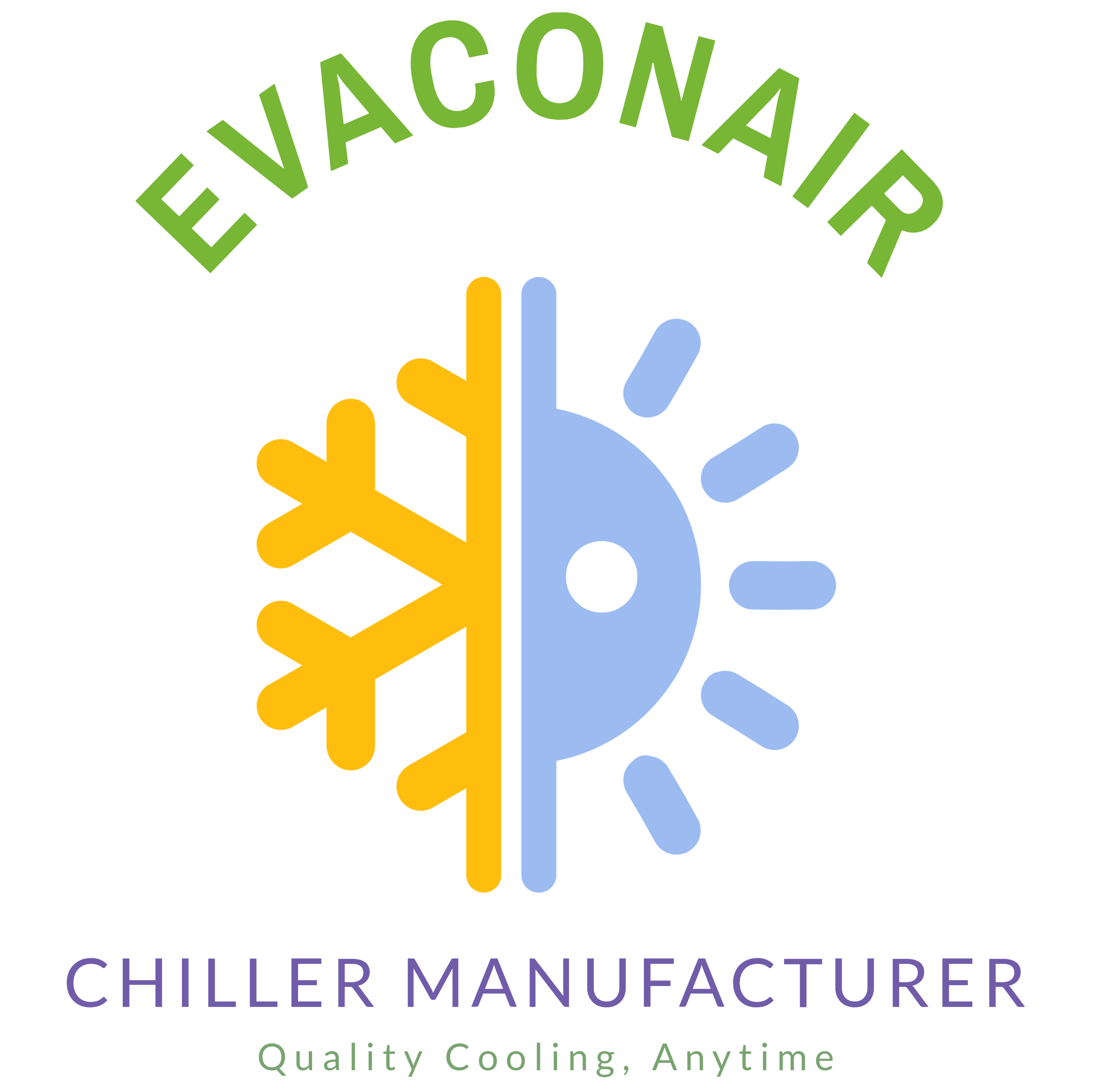Blog
Which is Better: Rotary or Reciprocating Chiller?
When comparing rotary chillers and reciprocating chillers, the best choice depends on factors like cooling requirements, operational efficiency, cost, and maintenance. Both types of chillers are used in various commercial and industrial applications, but they differ in their design and performance.
Rotary Chiller
A rotary chiller uses a rotary compressor, which consists of a rotating element that compresses the refrigerant. Rotary chillers are known for their smooth operation and efficiency, especially in smaller systems.
Advantages of Rotary Chillers:
- Quiet Operation:
- Rotary compressors operate with minimal noise and vibration due to their continuous rotation. This makes them ideal for environments where quiet operation is important, such as office buildings or hotels.
- Higher Efficiency at Low Loads:
- Rotary chillers are more energy-efficient when operating under low to moderate loads, making them suitable for smaller systems. They are commonly used in systems like Air-Cooled Water Chillers in Ahmedabad where moderate cooling is required.
- Lower Maintenance:
- Rotary chillers have fewer moving parts compared to reciprocating chillers, resulting in less wear and tear and lower maintenance costs. They are a good option for businesses looking for reliable, low-maintenance solutions.
Disadvantages of Rotary Chillers:
- Less Efficient at High Loads:
- While rotary chillers are efficient at lower loads, they are less suitable for large-scale industrial applications where high cooling capacities are needed. For heavy-duty applications, systems like Water Cooled Screw Chillers in Ahmedabad may be more appropriate.
Reciprocating Chiller
A reciprocating chiller uses a piston-and-cylinder mechanism to compress refrigerant. This type of chiller is often used in older systems and smaller commercial applications.
Advantages of Reciprocating Chillers:
- Lower Initial Cost:
- Reciprocating chillers generally have a lower upfront cost compared to rotary chillers, making them a more affordable option for smaller businesses or those on a budget.
- Effective for High Pressure:
- Reciprocating chillers are effective at handling higher pressures and are often used in systems that require higher cooling demands in compact spaces.
- Compact Design:
- Reciprocating chillers tend to have a compact design, making them suitable for installations where space is limited.
Disadvantages of Reciprocating Chillers:
- Higher Maintenance Costs:
- Due to the piston mechanism and more moving parts, reciprocating chillers require more frequent maintenance and have higher operational costs over time. This can lead to increased downtime and higher repair expenses.
- Noisier Operation:
- The reciprocating action of the piston creates more noise and vibration compared to rotary chillers, making them less suitable for environments that require quiet operation.
Comparison: Rotary Chiller vs. Reciprocating Chiller
| Criteria | Rotary Chiller | Reciprocating Chiller |
|---|---|---|
| Efficiency | Higher efficiency at lower loads | Effective at handling high pressure, but less efficient overall |
| Initial Cost | Higher initial cost | Lower upfront cost |
| Maintenance | Lower maintenance due to fewer moving parts | Higher maintenance and operational costs |
| Noise and Vibration | Quiet and smooth operation | Noisier with more vibrations |
| Ideal Applications | Smaller systems with moderate cooling needs | Smaller, high-pressure systems |
| Durability | More durable with longer lifespan | Less durable due to more wear and tear |
Which is Better for Your Needs?
Rotary Chillers:
- Best for small to medium-sized applications that require quieter operation and low maintenance. They are commonly used in commercial HVAC systems such as Air-Cooled Water Chillers in Ahmedabad.
- Ideal for businesses looking for long-term operational efficiency and reliability.
Reciprocating Chillers:
- Best for high-pressure systems with a smaller budget. Suitable for installations where upfront cost is the primary concern, but higher maintenance and operational costs are manageable.
- Used in smaller, more compact systems or older setups where high cooling demand is required but space is limited.
Conclusion
Both rotary chillers and reciprocating chillers have their strengths, but the better option depends on your specific cooling requirements. Rotary chillers are more energy-efficient and require less maintenance, making them ideal for commercial applications like Air Cooled Screw Chillers in Ahmedabad. On the other hand, reciprocating chillers offer a more affordable upfront cost but come with higher maintenance needs and noise, making them suitable for small systems where cost is a primary factor. For more information, visit our products page or consult with Chiller Manufacturers in Ahmedabad and Chiller Dealers in Ahmedabad for expert guidance.
